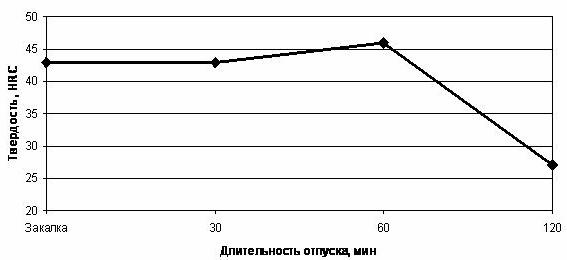

Currently, approximately 90% of the melted steel and nonferrous metals and alloys processed by pressure. Rolling - the most common type of metal forming. Rolling of the most frequently divided into hot and cold, and made in rolling mills. It is known that modern mills have a lot of stands, which are divided into rough, intermediate and finishing. Each of the types of stands characterized by their specific parameters and, accordingly, should be made of his material. To produce rolls roughing stands, typically used gray cast iron, finishing - hard alloys, and for the manufacture of roll cages, there are many intermediate grades, which differ depending on the products. Widely used as material for the intermediate roll cages were high-chromium steel characterized by high wear resistance and toughness, achieved a special heat treatment. Study of influence of heat treatment on structure and properties of high-chromium steels is devoted to this master's work.
The studies were conducted on samples of steel Cr12Ni4 cut from the roll for hot rolling of steel reinforcing bars and bars. As the heat treatment applied hardening of 1100oC, duration of exposure - 30 min. With the subsequent release of varying duration. Cooling after tempering in air and furnace. Each stage of heat treatment followed by measurement of Hardness Rockwell C scale in accordance with GOST 9013. Investigation of the microstructure of samples after processing performed on microscope Neophot 21, with increases x200, x500, and x1000. For the etching was used 30% aqueous solution of ferric chloride. Hardness measurement showed that after quenching is a slight increase in hardness compared to its initial values. The effect of leaves of varying duration at different cooling conditions is shown in Figures 1 and 2.

Figure 1 - Influence of the duration of tempering with air cooling on the hardness of steel Cr12Ni4 after heat treatment

Figure 2 - Influence of the duration of tempering with cooling in the stove at the hardness of steel Cr12Ni4 after heat treatment
From the resulted information evidently, that single vacation at cooling on air results in the decline of hardness in relation to its values, got after tempering. At cooling in a stove the increase of hardness takes place at duration of vacation 1 hour. A structure looks like thus,presented on a Figure 3.

Figure 3 - Structure of steel Cr12Ni4 after heat treatment by 1000oC and tempering with cooling in the stove
The conducted researches showed that disintegration of high-alloyed austenite in it takes place chrome-nikel steel of type Cr12Ni4 at vacation with cooling in a stove with duration 1 hour, also there is a selection of carbides, that is accompanied the increase of hardness. In future research of influencing of double vacation is planned on a structure and properties of such steel.